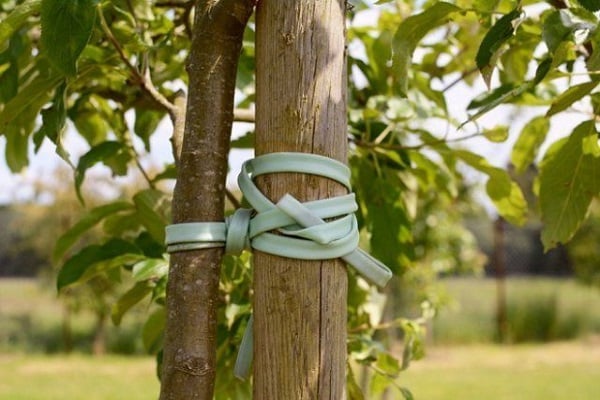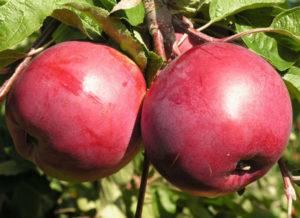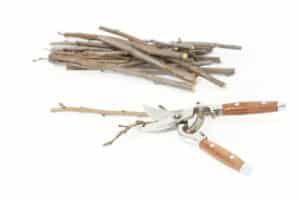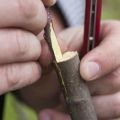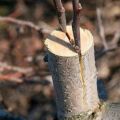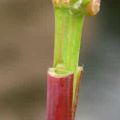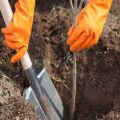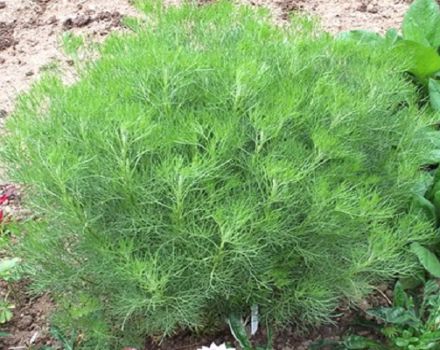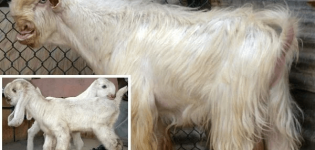How to properly plant an apple tree in summer, spring and autumn with fresh cuttings for beginners step by step
When there is not enough space in the garden, but you want different varieties of apples to grow in it, you can solve this problem by grafting. Also, such a procedure helps to improve the variety and create a tree that is resistant to diseases and temperature extremes. A competent gardener knows how to plant an apple tree correctly in order to get the desired result faster.
Content
- 1 Why do you need to plant an apple tree
- 2 How to tell if a tree is ready for grafting
- 3 Required tools and materials
- 4 Terms of grafting apple trees
- 5 Vaccination methods
- 6 Choice of scion and rootstock
- 7 Features in different regions
- 8 Possible mistakes beginner gardeners
- 9 Apple tree care after vaccination
Why do you need to plant an apple tree
Every gardener has his own reasons for grafting an apple tree. Here are the most common ones:
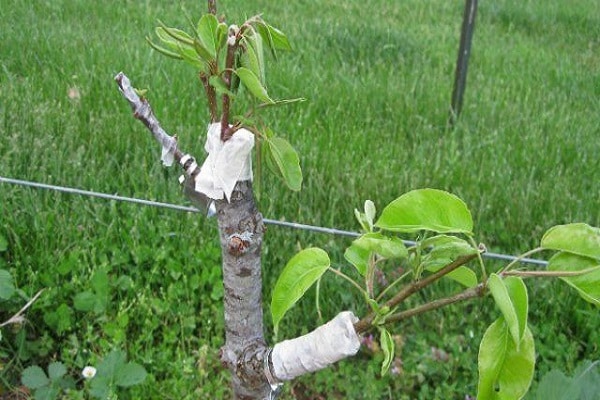
- To grow several varieties of apples on one tree. This is especially true when there is little space in the personal or garden plot.
- To keep the variety. It happens that somewhere near the house an old apple tree grows, and its life is coming to an end or it has been damaged by pests. In order not to lose this variety, they are grafted from it onto a suitable stock.
- To improve the endurance of the tree. For this, cultivated tender varieties are grafted onto more hardy wild varieties with a good root system. This will allow the tree to withstand frost and drought better. Also, there will be fewer problems with pests.
- In order not to take seedlings somewhere, but to grow them ourselves. It takes several years to obtain a sample from a tree. And if the variety is not what you wanted, time will be lost. It is more profitable to plant the variety that you need on your own.
- Some gardeners do grafting for fun, as a hobby.
- Also, a dwarf apple tree cannot be grown without vaccination.
The grafted tree will always retain the varietal qualities of the scion. Grafting early varieties into late game will result in an early variety, not the other way around. The stock is only needed for the root system.
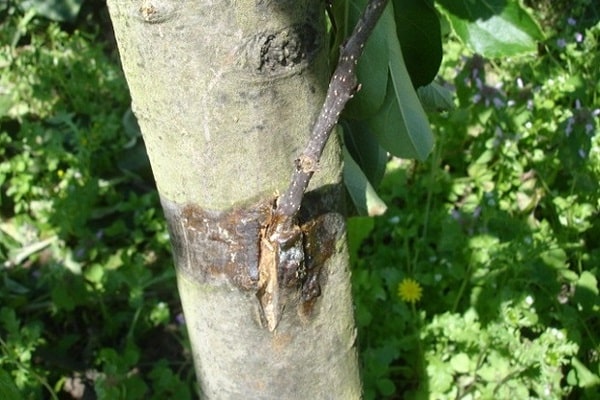
How to tell if a tree is ready for grafting
To get a good result from grafting, you need to know if the tree is ready for such a procedure. There are some simple rules for rootstock:
- The tree must be at least three years old, with a well-developed root system.
- It should be strong, free from damage or signs of disease.
- It is better to vaccinate during active sap flow. At this time, the bark of the trees is moist, elastic. It can be easily removed from the tree. If the bark is removed poorly, then sap flow has not yet begun, and the grafted stalk may not take root.
If a mature perennial tree is used as a stock, it must be cleaned of damaged old branches and the cuts must be carefully processed.To do this, you can use special tools, paint or ordinary lime. This will prevent infection and close access to small pests.
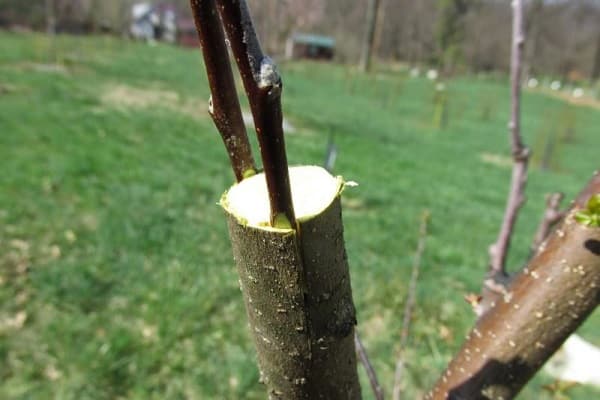
Required tools and materials
Grafting a tree can be compared to a surgical operation, therefore there are a number of requirements for instruments:
- The main grafting tool is a garden knife. It must be very sharp to minimize injury to the tree. It also needs to be treated with a disinfectant. For this, regular alcohol or alcohol-containing product is suitable. Peroxide or iodine can be used.
- Pruner. It is used when you need to cleanse the tree of excess shoots.
- Use a garden saw to remove larger branches.
- Strapping material. For this, ordinary scotch tape, electrical tape, twine, a piece of film may be suitable. It is important that the material is strong and fits well.
- Material for covering up wounds. If it is not used, the quality of the vaccine deteriorates significantly and nothing may work out. To do this, use garden var, paint, special putty or ordinary plasticine. The main purpose of the putty is to block air from wounds and prevent infection.
The success of the vaccination depends on the quality of the inventory by 50%. Violations in this area are not allowed.
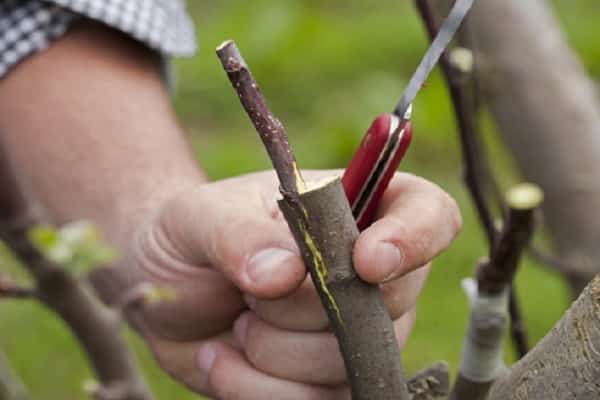
Terms of grafting apple trees
There are several times when you can plant an apple tree. But the best are still in early spring, when sap flow began.
In the spring
The best time to graft an apple tree is when nature awakens from hibernation. When the frosts receded and the sun began to warm up, all the plants begin to grow vigorously.
During this period, the scion takes root best. He has no shortage of food, because everything he needs he gets with rootstock juice.
All this happens in March-April, depending on the region. At this time, it is better to do a cuttings inoculation. Budding is done a little later, in early May.
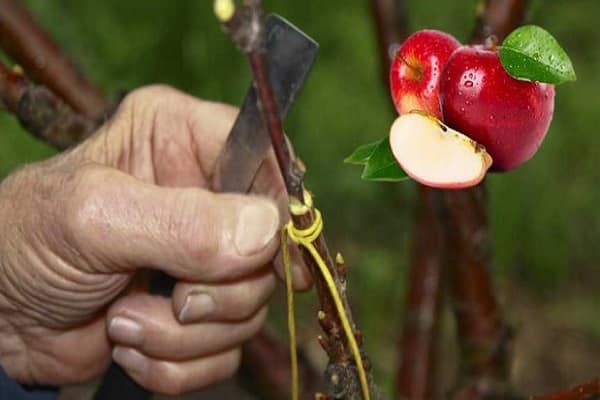
Summer
Summer grafting takes place in mid or late August, depending on the region. At this time, the period of the second sap flow in trees begins. In the northern regions this happens in July.
At this time, it is better to use a dormant bud for the scion. It takes root better than the cutting, since it requires less nutrition. It is better to take the buds fresh - immediately after cutting from the tree, transfer them to the stock.
In autumn
Autumn budding occurs in late September - early October, subject to warm weather. If the daytime temperature drops below 15 degrees, the vaccination is risky, it may not take root.
In the fall, it is better to use methods for bark or splitting. And do it on young trees. Mature trees do not like fall interventions and can get sick.
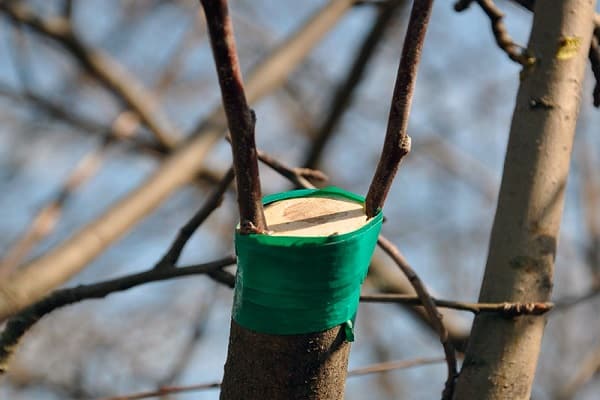
Vaccination methods
Many ways of grafting trees have been known for a long time. A stalk or bud is used as a scion. It can be taken sleeping or sprouting.
Inoculation is done for the bark, in the cleft, by the bridge, by copulation, budding and others. For beginner gardeners, it is best to try splitting or budding cuttings. Let's take a closer look at the most common methods.
Bud and cuttings
Grafting with a kidney is called budding, and a graft is called copulation. The material for the procedure is procured in advance and stored in a cold place, or collected immediately before work.
Grafting with a bud can be done in early spring or autumn after foliage has fallen. Cuttings are harvested in the fall and used in the spring. If the grafted stalk is covered with green shoots in summer, they must be removed, leaving the strongest one.
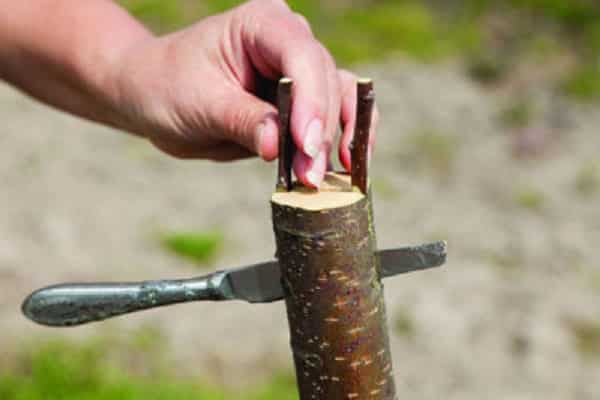
Into the cleft
This method is quite simple and effective. You can use one stalk or up to four at a time.
Gives good results when re-grafting of the apple tree is required. For example, when the grafted apple tree grew up, it gave a sample, but the fruits were not as expected.In this case, you can saw off the branches and plant another variety in place of the saw cut.
They are made on trees where the thickness of the branches does not exceed 5 cm in diameter, and their age is no more than 6 years. Vaccination is done as follows:
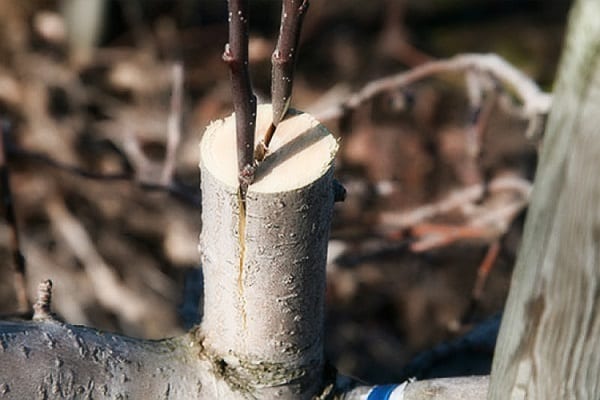
- Carefully cut down the branch at the place where the procedure will be performed. Tools must be disinfected before work.
- With a sharp knife, split the cut in half. If you plan to pin 4 cuttings at once and the thickness of the saw cut allows, the split is done crosswise.
- To prevent the wood from closing, a small peg is first inserted into the split.
- The stalk is carefully cut from the bottom onto a wedge and inserted into the cleft so that it fits snugly. It is important that the cambium layer on the stem matches the cambium layer on the stock.
- The rootstock branch or stump is tightly tied with a garter material so that the split is clamped as much as possible.
- Then all places where there is no bark are carefully covered with any material prepared for this.
If one graft is grafted, it should be slightly thinner than the rootstock. But if more are vaccinated, they need to be taken thinner so that they fit well and feel comfortable. When placing cuttings, you need to monitor the alignment of the cambium.
First, widen one split and insert two cuttings on the sides. Then the wedge is rearranged into the second split and two other cuttings are inserted.
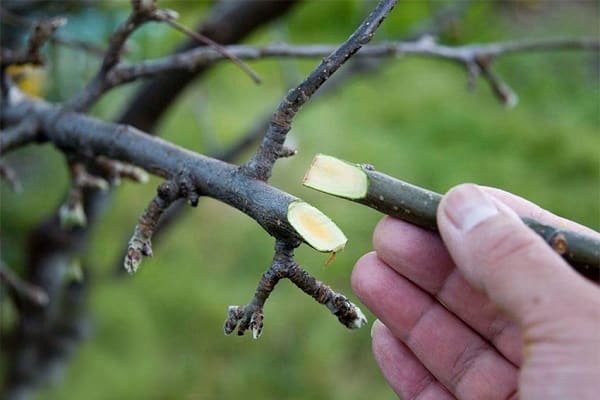
Peephole budding
To carry out budding with a kidney, you first need to determine the site of vaccination. This could be under a branch or on the trunk of a tree. To do this, you need to carry out the following actions:
- From a suitable tree, cut the bud along with a small piece of bark.
- In the place where the grafting is supposed, cut the bark in the shape of the letter T.
- Then it is carefully pushed apart and the cut out peephole is inserted. The boundaries of the cambium must match.
- The bark is pressed and tied with a dressing material. Electrical tape or tape is best suited for these purposes.
You cannot remove the bandage during the summer, but you need to make sure that it does not pinch the tree and, if necessary, loosen it.
The method is good because in this way planting material is saved.
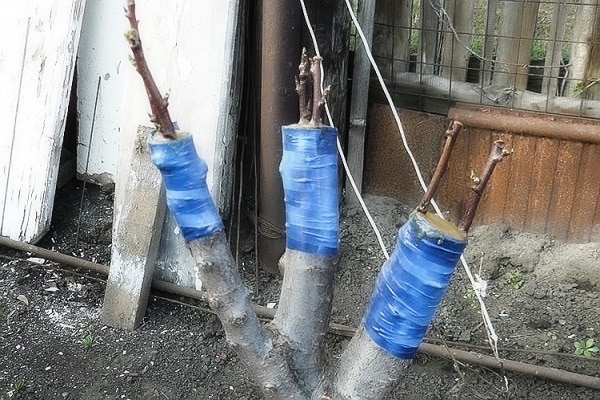
Grafting pruner
Currently, there are special pruners that allow you to properly cut the cuttings for this job. Here's how to do it step by step:
- A fresh or prepared cutting is taken.
- The tip is cut off with a secateurs.
- Then the branch is cut, where the grafting will be carried out. It is important that the thickness of the material matches.
- The handle is inserted into the incision and wrapped tightly with adhesive tape.
The work is very easy and convenient, but the reviews about this method are more negative, the survival rate is low.
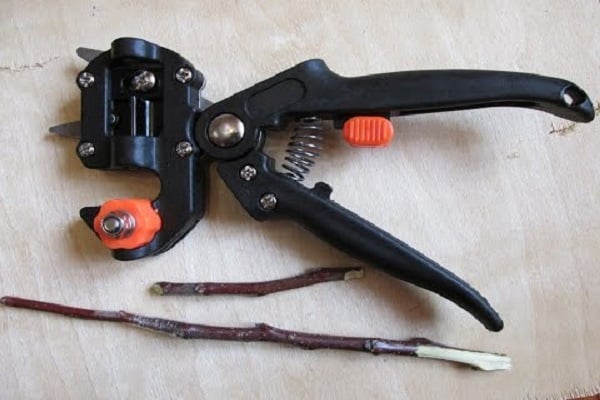
By the bridge
This method allows you to save a tree in the event that its bark is severely damaged, and it may die. Graft the cuttings to the trunk to restore the canals.
If damage was found, it must be urgently treated and covered with garden varnish. So it will be able to hold out until the next sap flow. Before starting it, you need to make bridges from cuttings through which the juice will flow to the crown of the tree.
You need to do the following:
- Prepare cuttings that are slightly longer in size than the wounds on the tree.
- Peel off the putty on the wood and trim the edges of the wound.
- Under and above the wound, incise the bark in the shape of the letter T.
- Remove the buds from the cuttings and cut off the ends with an oblique cut.
- Insert the ends of the cuttings under the bark of the tree from the underside. It is important that the cuttings are positioned correctly, not upside down, so that the juice moves upward.
- Tie the tree in place of the cuts, pressing the cuttings tightly.
- Insert the top ends under the bark.
- Tie the top of the tree.
If everything is done correctly, the tree can still live for several years and give an opportunity to be grafted from it onto another tree.

For the bark
This is one of the easiest and most effective methods to plant an apple stalk in the right place. Cuttings of young trees or from fresh annual shoots are used.It is carried out in the following way:
- A place for work is chosen. This can be a sawn down central trunk, a stump, or a thick branch. The main thing is to have a healthy elastic bark.
- The edge of the bark is incised with a cut from top to bottom by 4-5 cm. The bark is cut to wood.
- The cut is prepared in advance, but the cut is made immediately before the procedure. Cut off the end with an oblique cut, in diameter four times the diameter of the cutting.
- The stalk is inserted behind the bark, but not to the full cutting depth, it should be 2 mm above the cut.
- Wrap the trunk or branch tightly in the place where the handle is inserted.
- Cover open areas with pitch.
This method allows grafting into trees of various thicknesses and ages. You can put several cuttings at once, but then leave the strongest ones.
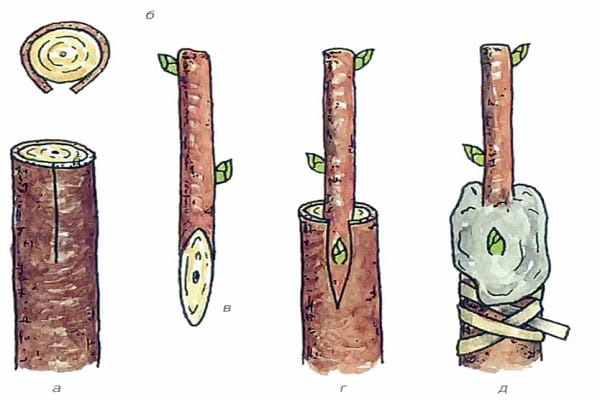
Choice of scion and rootstock
Cultivars are usually grafted onto the wild. But options are possible when a certain variety is grafted onto a seedling of the same variety.
The graft is chosen from the fruit tree of the variety you like. The tree must be healthy and produce good yields. If there is a suspicion that it is ill, it is necessary to treat it during the summer.
Cuttings are best prepared in autumn and stored until spring. They are cut with a sharp knife at a distance of 30-40 cm from the edge, they must have at least 3-4 buds. The cut is made oblique, and its diameter should be greater than the diameter of the cutting itself. Then the place of the cut is treated with garden varnish or other putty material and taken out for storage. They store the cuttings in the basement, but you need to make sure that they do not start growing. It is better to prepare them with a margin, so that in the spring you can choose those that winter better. They must be clean and free of stains.
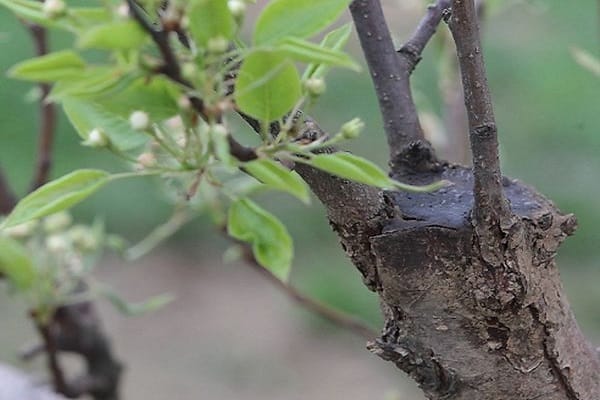
As a rootstock for an apple tree, it is better to use a wild young apple tree or a seedling of a cultivar. You can graft an old tree if you need to renew it. It is important that the stock is healthy, without signs of disease, without disturbing the integrity of the bark.
The apple tree can also be grafted onto pear, mountain ash, quince and hawthorn. But this can affect the result and such a tree will not live long. In addition, with such a relationship, the quality of the fruit may deteriorate. They may become small and not as tasty.
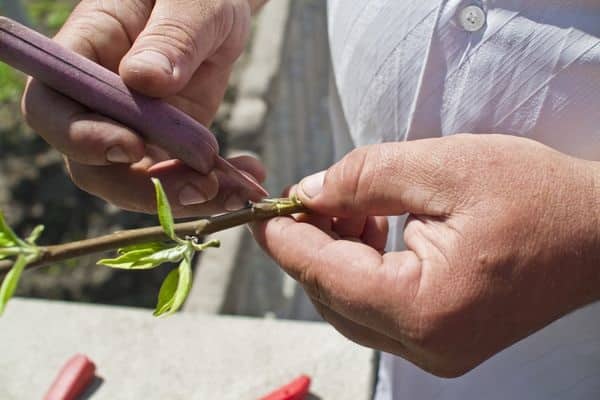
Features in different regions
Different climatic regions have their own characteristics.
Spring grafting in the southern regions is done two weeks earlier than in the northern latitudes. There you can start budding as early as March, while in colder places the time is postponed to mid-April - early May.
Summer budding in the northern regions is done earlier than in the southern ones. It is carried out from mid-July to early August, while in the southern regions it can be carried out until mid-September.
Autumn grafting is not done in northern latitudes. Due to early frosts, the scion dies. You can take a chance and wrap the tree well. But the chances are very few and it is better not to injure the tree once again, but to postpone the procedure until spring.
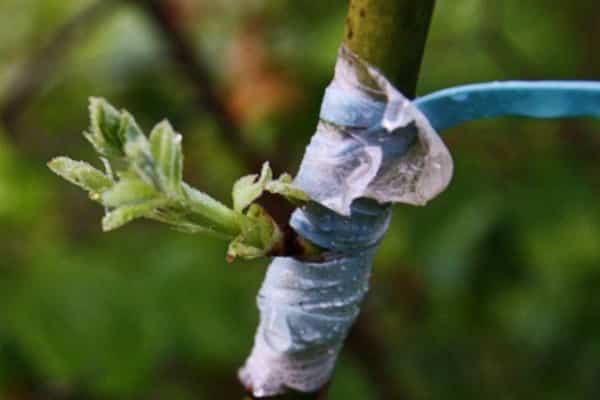
Possible mistakes beginner gardeners
Novice gardeners may not know many subtleties and make mistakes when grafting an apple tree. This leads to failure and wasted time. Here are a few reasons why you might fail:
- An infection has been introduced into the budding site. It could be brought in with dirty tools or hands, touching the cut.
- The timing of the procedure was calculated incorrectly.
- The cuttings were prepared correctly, but they were stored in a warm place and began to grow ahead of time, or began to dry.
- The cambium layers did not match or moved.
- Poor quality putty with harmful impurities was used.
- No insulation was carried out for the winter.
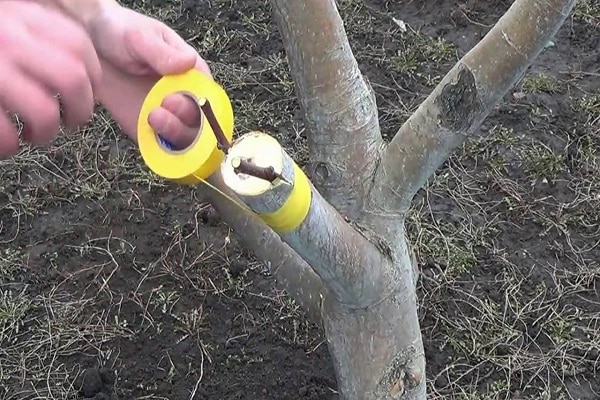
Some gardeners wrap the place of the procedure in a film, forgetting to leave air access. In the heat, this leads to steaming and death of the scion. The rootstock can also suffer from this.
Apple tree care after vaccination
A correct procedure is not enough to be successful. The tree must be looked after, otherwise the scion may not have time to get stronger and dry out over time. The care is as follows:
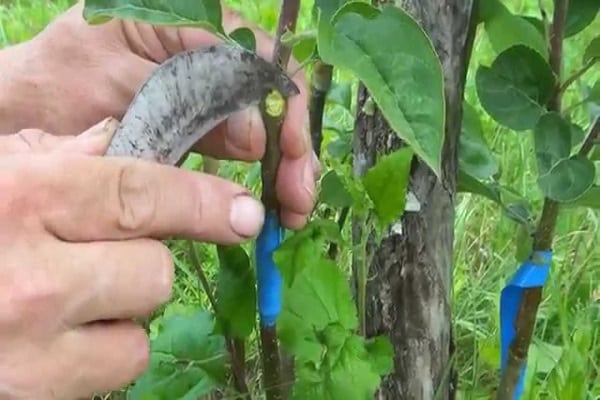
- It is important to ensure that the cuttings have enough moisture. If the summer is dry, the graft site can be wrapped in plastic, after putting some earth between the wood and the film. It needs to be moistened regularly as it dries.
- To prevent the stalk from being broken by birds or the wind, it needs to be protected. Cover with a paper bag or tie to a peg.
- For the winter, the scion is wrapped in burlap so that it does not die from frost.
- It is necessary to monitor the dressing. It should be borne in mind that the tree is growing, and a dense dressing material squeezes it. If this happens, the dressing should be loosened regularly. When the vaccination site is completely healed, the dressing is completely removed.
- A grafted apple tree will produce many new wild shoots. They need to be cleaned regularly and weaken the wood.
The rest of the care is the same as for an ordinary fruit tree - feeding, watering, removing weeds and loosening the soil.
